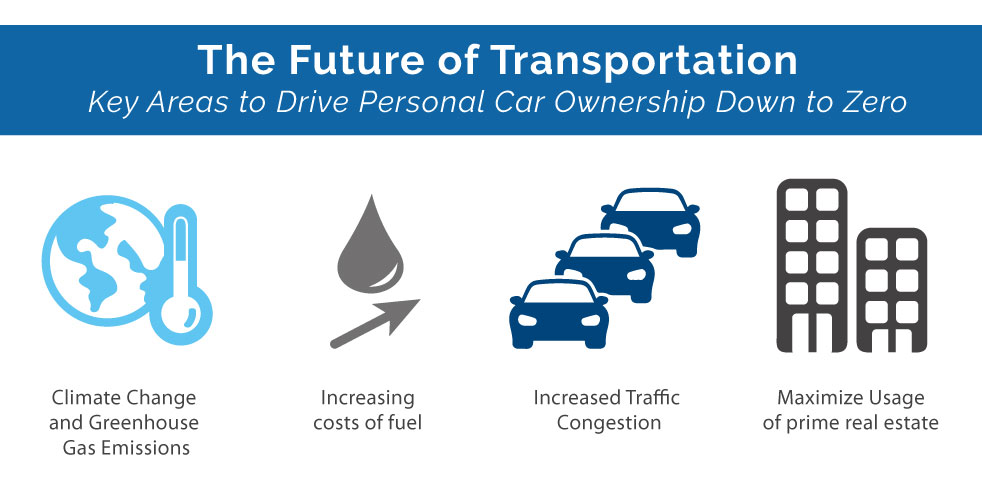This is Part 2 in our series on the future of transit (gathered during the recent CUTA — Canadian Urban Transit Association, New Mobility Symposium held in Vancouver, British Columbia).
Read Part 1 here.
We started our previous post by stating that transit agencies will play a key role in delivering mobility services in our transportation future. However, our mobility future will also include a range of services and solutions from some very non-traditional players.
During the Symposium, experts stated the ultimate mobility goal is to drive personal car ownership down to zero. There are a number of drivers at play today that make this goal of keen importance to us all. They are:

- Climate Change and Greenhouse Gas Emissions
- Increased Traffic Congestion in major urban centers around the world
- Increasing costs of fuel
- The need to maximize usage of prime real-estate (urban parking lots) for better purposes
In order to achieve this goal, our future mobility solutions must make transportation as easy, safe, and comfortable as that of the personal car. This is imperative, as people place very high value on their time and mobility is at the core of our lives. Mobility is the key to getting your hair cut, going out for dinner, seeing live theatre, seeing your doctor/dentist and/or accessing emergency medical services (hospitals) to name a few.
Before we reach our end goal, we’ll need to first migrate to a model where TNCs[i] and Transit agencies work together to provide a more custom mobility experience. This is a shift in thinking from early predictions which saw transit services being supplanted by ride-hailing companies. Data now clearly shows ride-hailing complements transit services.

If transit covers the core of a person’s commute, the first and the last segment of a person’s trip, often referred to as first and last miles, can be satisfied with ride-hailing. TNCs themselves will soon evolve to a point where other forms of transportation will be on offer (such as a scooter or bicycle) to ensure more efficient first and last mile commuting. The combination of transit and TNC solutions will help to address the more complex commutes of shift workers — TNC service can be taken early in the morning when transit is not running and conversely, transit can be taken on the way back when transit is running.
The use cases mentioned above are a step in the right direction, but while they provide increased and more customized services for end users, they do not fulfill the goal of providing services equal to that of personal car ownership, and they do not help to decrease traffic congestion and emissions. Fear not, mobility services designed to tackle these ever-pressing issues are just around the corner.
Our third post in this series will continue next month.
Subscribe to make sure you don’t miss the next installment.

